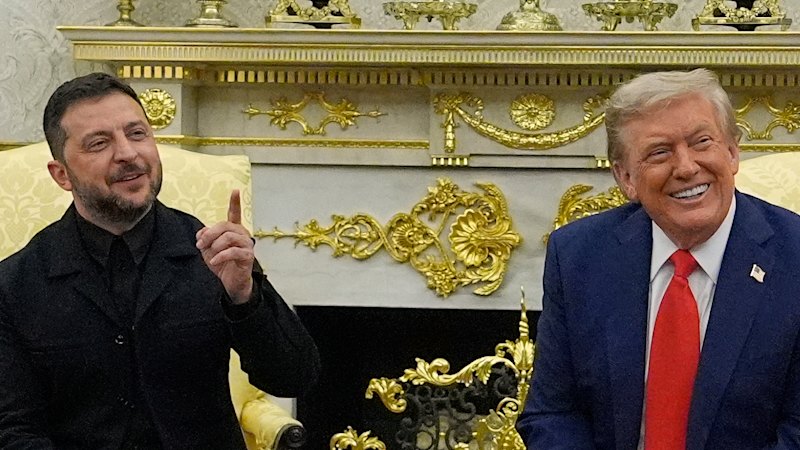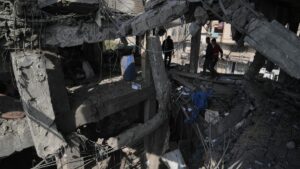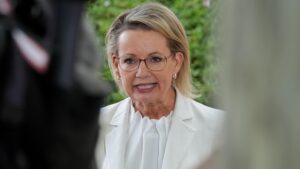
President Donald Trump announced that the United States will assist in providing security guarantees for Ukraine as part of efforts to negotiate a peace deal to end the ongoing conflict with Russia. During a meeting with Ukrainian President Volodymyr Zelensky in the Oval Office, Trump emphasized that while American troops would not be deployed, the U.S. would play a role alongside European allies in offering “NATO-like” protections.
In a significant shift from their previous encounter in February, where tensions were palpable, the dialogue between Trump and Zelensky appeared more amicable. Zelensky expressed gratitude for Trump’s commitment to ending the war and acknowledged a letter from First Lady Melania Trump addressed to Vladimir Putin, highlighting the humanitarian crisis affecting children in the conflict.
“The people of Ukraine have suffered incredibly,” Trump stated, expressing optimism about the potential for a trilateral meeting involving himself, Zelensky, and Putin, which he believes could lead to a resolution of the conflict.
Security Guarantees and European Involvement
A central aspect of any peace negotiations revolves around establishing a security framework for Ukraine to deter future Russian aggression. Trump reiterated that while there has been longstanding resistance to Ukraine’s membership in NATO, he is open to exploring “NATO-like” security arrangements.
“They are the first line of defense because they’re there, they’re Europe,” Trump remarked, assuring that the U.S. would provide significant support. He clarified that while the U.S. would not send troops, it would remain actively involved in the security efforts.
When pressed about the possibility of American military involvement, Trump stated, “We’ll let you know that maybe later today.” This statement came ahead of a meeting with seven prominent European leaders, including British Prime Minister Keir Starmer and French President Emmanuel Macron, all gathered at the White House for discussions on the war.
Shifting Focus to Comprehensive Peace
In his remarks, Trump indicated a departure from the previous focus on an immediate ceasefire. He expressed a desire to pursue a comprehensive peace deal instead. “I don’t think you need a ceasefire,” he said, suggesting that a ceasefire might complicate negotiations rather than facilitate them.
Zelensky, on the other hand, underscored the necessity for robust military support, stating, “Everything” is needed for Ukraine to agree to an armistice, which includes a strong military presence, advanced weaponry, skilled soldiers, and intelligence sharing. Trump acknowledged that achieving peace would require guarantees from major nations, including the U.S.
The meeting marked a notable contrast to the earlier February encounter, which had been marked by tension. Vice President JD Vance attended the meeting but did not speak publicly, and the atmosphere was lighter, with Zelensky even joking about his attire compared to the previous meeting.
As Trump prepared to engage with Putin later that day, he asserted that a trilateral meeting would be essential for moving forward. “If we don’t have a trilat, then the fighting continues,” Trump warned, emphasizing the importance of collaborative dialogue to forge a path toward peace.
The discussions underscore ongoing international efforts to resolve a conflict that has caused widespread suffering and instability in the region. Further developments are anticipated as key leaders continue to engage in diplomatic efforts to secure a lasting peace.







